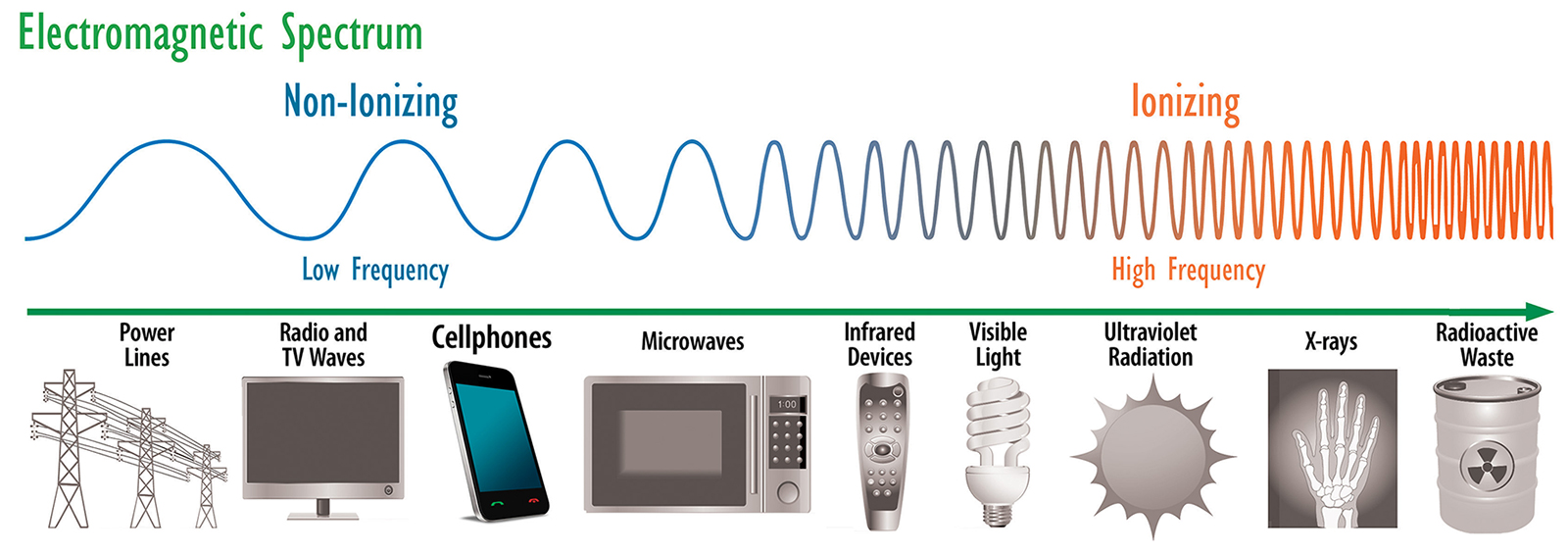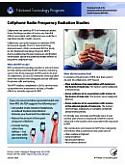Introduction

Cell Phones
Cell phones of some kind are owned by 97% of American adults of American adults. Given the large number of users, any harmful effects associated with cellphone use could be a significant public health concern.
Fact Sheets
Cell Phone Radio Frequency Radiation Studies
What is NIEHS Doing?
The National Toxicology Program (NTP), headquartered at NIEHS, has conducted toxicology studies in rats and mice to help clarify potential health hazards, including cancer risk, from exposure to radio frequency radiation (RFR) like that used in 2G and 3G cell phones.
What did NTP study?
NTP conducted toxicology studies in rats and mice to help clarify potential health hazards, including cancer risk, from exposure to RFR used in 2G and 3G cell phones. 2G and 3G networks were standard when the studies were designed and are still used for phone calls and texting. The NTP studies, completed in 2018, are the most comprehensive assessment, to date, of health effects in animals exposed to RFR.
What did the studies find?
In studies of high levels of RFR, like that in 2G and 3G cell phones, the NTP studies found:
- Clear evidence of an association with tumors in the hearts of male rats. The tumors were malignant schwannomas.
- Some evidence of an association with tumors in the brains of male rats. The tumors were malignant gliomas.
- Some evidence of an association with tumors in the adrenal glands of male rats. The tumors were benign, malignant, or complex combined pheochromocytoma.
For female rats, and male and female mice, it was unclear, also known as equivocal, whether cancers observed in the studies were associated with exposure to RFR.
NTP has four categories of evidence related to whether a substance may cause cancer:
- Clear evidence (highest)
- Some evidence
- Equivocal evidence
- No evidence (lowest)
Do the rat and mouse findings apply to humans?
The findings in animals cannot be directly applied to humans for two key reasons:
- The exposure levels and durations were greater than what people may receive from cellphones.
- The rats and mice received RFR across their whole bodies, which is different from the more localized exposures humans may receive, like from a cell phone in their pocket or next to their head.
However, the studies question the long-held assumption that RFR is of no concern as long as the energy level is low and does not significantly heat the tissues.
How do the NTP studies relate to 4G, 5G, or Wi-Fi?
NTP studies of RFR used in 2G and 3G cell phones do not apply to 4G or 5G technologies. These newer technologies use different methods of signal modulation than NTP used in the studies. The NTP studies also did not investigate frequencies and modulations used for Wi-Fi.

What is the difference between electric and magnetic fields and RFR?
RFR is a subcategory of electric and magnetic fields (EMF), which are the invisible waves of force that surround any electrical device. The different types of EMF are distinguished by their frequencies. RFR is a form of low frequency, non-ionizing radiation. Cell phones use RFR to transmit signals.
Further Reading
Stories from the Environmental Factor (NIEHS Newsletter)
- NTP Scientist Weighs in on 5G Technology (January 2020)
Additional Resources
- Cell Phones and Cancer Risk Fact Sheet - National Cancer Institute (NCI)
- Consumer Update on Cell Phones - U.S. Food and Drug Administration (FDA)
- Fact Sheet on Mobile Phones - World Health Organization (WHO)
- IARC Classifies Radiofrequency Electromagnetic Fields as Possibly Carcinogenic to Humans - The WHO/International Agency for Research on Cancer (IARC) has classified radiofrequency electromagnetic fields as possibly carcinogenic to humans (Group 2B), based on an increased risk for glioma, a malignant type of brain cancer, associated with wireless phone use.
- Tips for Reducing Exposure to Radiofrequency Radiation
Related Health Topics
Research Links
- Michael Wyde, Mark Cesta, Chad Blystone, Susan Elmore, Paul Foster, Michelle Hooth, Grace Kissling, David Malarkey, Robert Sills, Matthew Stout, Nigel Walker, Kristine Witt, Mary Wolfe, John Bucher. 2016. Report of Partial findings from the National Toxicology Program Carcinogenesis Studies of Cell Phone Radiofrequency Radiation in Hsd: Sprague Dawley® SD rats (Whole Body Exposure) bioRxiv 055699. [Abstract Michael Wyde, Mark Cesta, Chad Blystone, Susan Elmore, Paul Foster, Michelle Hooth, Grace Kissling, David Malarkey, Robert Sills, Matthew Stout, Nigel Walker, Kristine Witt, Mary Wolfe, John Bucher. 2016. Report of Partial findings from the National Toxicology Program Carcinogenesis Studies of Cell Phone Radiofrequency Radiation in Hsd: Sprague Dawley® SD rats (Whole Body Exposure) bioRxiv 055699.] [doi:10.1101/055699 Michael Wyde, Mark Cesta, Chad Blystone, Susan Elmore, Paul Foster, Michelle Hooth, Grace Kissling, David Malarkey, Robert Sills, Matthew Stout, Nigel Walker, Kristine Witt, Mary Wolfe, John Bucher. 2016. Report of Partial findings from the National Toxicology Program Carcinogenesis Studies of Cell Phone Radiofrequency Radiation in Hsd: Sprague Dawley® SD rats (Whole Body Exposure) bioRxiv 055699.] [PDF Michael Wyde, Mark Cesta, Chad Blystone, Susan Elmore, Paul Foster, Michelle Hooth, Grace Kissling, David Malarkey, Robert Sills, Matthew Stout, Nigel Walker, Kristine Witt, Mary Wolfe, John Bucher. 2016. Report of Partial findings from the National Toxicology Program Carcinogenesis Studies of Cell Phone Radiofrequency Radiation in Hsd: Sprague Dawley® SD rats (Whole Body Exposure) bioRxiv 055699.]



